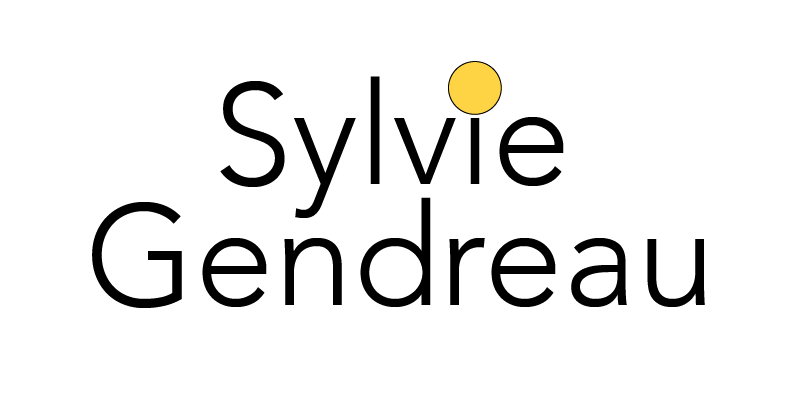Are you ready for the Age of Regeneration? The Next Human Revolution!
Something remarkable is happening across the world — quietly, steadily, and yet profoundly. After centuries of extraction and decades of sustainability pledges, a new paradigm is emerging: regeneration.
This is a systemic shift in how we produce, finance, measure, and even imagine progress.
Regeneration means restoring what has been damaged, but it also means re-designing human activity so that every action, every business model, and every innovation contributes to the vitality of life itself.
Visual creation: Pierre Guité with Mid-Journey: Two open doors between twin coastal trees—a surreal invitation to step from extraction to renewal.
What Regeneration Means
Sustainability was about doing less harm.
Regeneration is about creating more life.
It goes beyond reducing emissions or improving efficiency. It asks:
How can agriculture heal the soil rather than deplete it?
How can industry circulate resources instead of extracting them?
How can finance reward restoration rather than short-term gain?
And crucially: how can humans regenerate their capacities for discernment, creativity, and empathy?
Regeneration is the next human revolution because it forces us to reconnect intelligence with interdependence. It’s no longer about controlling nature; it’s about collaborating with it.
Interdependence is not a metaphor; it is our operating system. As Bruno Latour argued, we live in the thin critical zone where soils, water, microbes, weather, sensors, standards, and capital are all co-producers of outcomes. Regeneration simply makes this visible—and governable. It turns interdependence into design.
🌍 The Global Momentum
Across continents, the same pattern keeps surfacing.
In Europe, investment houses now treat soil health and biodiversity as core value drivers. The French investment firm SWEN Capital Partners launched SWEN Terra, a €200 million fund dedicated to regenerative agriculture assets. Its goal is not only to finance farms in transition but to redefine return on investment —integrating soil health, biodiversity, and rural resilience into its metrics.
In Latin America, certification moves from reports to store shelves, making outcomes—soil vitality, water balance, livelihoods—legible to everyone. The Rainforest Alliance published its Regenerative Agriculture Standard, measuring soil vitality, carbon capture, and farmers’ livelihoods. The first certified product—coffee from Costa Rica and Mexico—will reach consumers next year through Nespresso. For the first time, the word regenerative will appear not in a report, but on a store shelf—visible, measurable, and accountable.
In India, public policy and finance blend to de-risk transitions at the landscape scale. The government has launched an ambitious national mission to restore soil fertility and secure food sovereignty through the cultivation of pulses and legumes—creating what could become the largest regenerative farming program on Earth. Over 100 districts are now testing models that blend traditional knowledge with scientific monitoring.
In Australia, the federal Climate Smart Agriculture Program has been reinforced by over one billion Australian dollars in low-interest loans for climate resilience and regenerative transition. The country’s farmers—long exposed to droughts and volatility—are now turning to circular irrigation, carbon-positive grazing, and integrated biodiversity corridors.
In East Africa, farmer-led programs show how restored land raises yields and resilience. Programs like Farm Africa’s STRAK initiative in Kenya demonstrate that regeneration is not an abstract concept, but a human story: restoring degraded land has doubled farmers’ yields and incomes while increasing their resilience to floods and droughts.
In North Africa, banking and industry partnerships align to secure water, energy, and food.
In Morocco, the partnership between Crédit Agricole du Maroc and TOURBA integrates regenerative finance with water and energy innovation, part of a broader Roadmap 2050 for agricultural sovereignty.
In Canada, public programs and industry partnerships are treating soil health as investable infrastructure. The federal On-Farm Climate Action Fund has been expanded through 2028 with $300 million to support cover crops and rotational grazing, while Agricultural Climate Solutions Living Labs brings farmers and scientists together to co-develop practices in real conditions. The Canada-Quebec partnership has committed $35 million to accelerate adoption. Across provinces, the work is not just funding practices—it's building the measurement tools that make regenerative outcomes legible to finance and policy
Different contexts, one direction: regeneration is becoming infrastructure—financial, ecological, and cultural.
Measuring the Invisible
If regeneration is to endure, it must become legible. Not to instrumentalize life, but to honor it. Measurement here is less a scoreboard than a way of listening: how much water the soil can hold after a long summer; how quickly insects and birds return when hedgerows grow back; how volatility eases when a farmer’s income no longer swings with a single crop or a single season. Once these signals are visible, they begin to influence board meetings and budget cycles. The questions change. Instead of asking how cheaply we can produce this quarter, leaders ask how resiliently we can produce over a decade—and which investments in landscape health will reduce risk while compounding value.
This shift requires new forms of evidence. Satellites trace the pulse of vegetation; field sensors translate moisture and temperature into stories the land is trying to tell; community data brings nuance that no instrument can capture. Slowly, a shared grammar emerges—one that allows finance, policy, and practice to compare outcomes across regions without flattening their differences. When vitality can be described with clarity, it can also be governed with care.
The Human Dimension
Visual creation: Pierre Guité with Mid-Journey: A suited hand presents a levitating golden apple—choice, value, and the promise of regeneration.
Regeneration does not happen because we invent a metric; it happens because people change how they see and how they act. The agronomist walks the field with a data scientist and they realize they are describing the same phenomenon from two angles; the engineer designing irrigation learns to think like a hydrologist; the procurement lead discovers that a longer contract can be the most radical form of climate strategy. Many of the required skills look technical, but the deeper capacities are human: attention, patience, the courage to question habits that once made sense and now quietly erode the future.
In this light, leadership becomes a craft of composition. The task is not to control a system too complex to grasp, but to compose with it—inviting farmers, scientists, lenders, and local institutions into the same room, around the same maps, until their constraints align and their timelines rhyme. The most striking progress often comes from this choreography: modest pilots that choose a place, a few clear outcomes, and a rhythm of learning that everyone can keep.
📊 A New Scorecard for the 21st Century
If the 20th century was governed by GDP, carbon footprints, and productivity ratios, the 21st will need a different compass.
Imagine a Regenerative Scorecard that measures not only financial performance but:
Soil vitality (organic matter, microbial life)
Biodiversity recovery (species return, pollination rates)
Water balance (retention, purity, and circular reuse)
Human well-being (income stability, education, sense of purpose)
Cultural resilience (local knowledge, intergenerational continuity)
This is not utopia. It’s already happening in pilot projects from Brazil’s Cerrado to India’s farmlands, where governments and NGOs co-develop landscape dashboards linking satellites, sensors, and community data.
The tools exist. The challenge is alignment—political, economic, and mental.
That alignment is harder in some regions than others. Political winds shift; regulatory frameworks fragment; what was incentivized yesterday may be penalized tomorrow. But this is precisely why regeneration matters: it's about building resilience into the fundamentals—soil, water, biodiversity, community—so that businesses can weather volatility rather than amplify it. The question isn't whether governments will lead. It's whether leaders can act on what they already know to be true about the systems their enterprises depend on.
Designing for More Life
When the purpose is to create more life, strategy simplifies. A company begins with the places it touches most—its sourcing regions, its facilities, its communities—and asks what would make those places stronger in five, ten, or twenty years. The answer may look like diversified rotations and living roots in the ground; or like watershed agreements that treat upstream and downstream as one; or like finance that rewards recovery instead of extraction. The tactics vary, but the direction is steady: from linear to circular, from short-term to long view, from isolation to interdependence made explicit.
What’s striking is how beauty returns as a by-product. Fields that hold water after storms look different; factories that trade heat and cold in closed loops sound different; neighborhoods that rebuild tree cover feel different. These are not aesthetics layered on top of function; they are signatures of a system tuned to life.
A Quiet Courage
Every transformation invites doubt. Regeneration asks for a quiet courage—the willingness to move before the path is fully mapped, and to admit that learning in public is not a weakness but a governance model. The organizations that advance are those that design feedback into their work: not annual reports, but seasonal conversations with the land and with the people whose lives it shapes. Progress then becomes iterative rather than theatrical. Less announcement, more adjustment. Less certainty, more intelligent steadiness.
From Intelligence to Wisdom
We often say that innovation is about information and interpretation. Regeneration extends the arc: from information to interpretation, from order to wisdom. Information tells us what is happening; interpretation tells us what it means; order turns meaning into practice; wisdom keeps practice aligned with life. In that sense, regeneration is not a department or an initiative. It is a way of thinking that reconnects action with consequence and invites leaders to measure success by the strength of the relationships their work leaves behind.
This shift doesn't happen in strategy decks. It happens in the questions leaders learn to ask—of their supply chains, their teams, their own assumptions about what creates value. The art is knowing which questions to ask first.
References:
Latour Bruno, We Have Never Been Modern, 1991
Latour Bruno, Politics of Nature, 2004
Latour Bruno, Facing Gaia, 2017
Latour Bruno, Down to Earth, 2018
SWEN Capital Partners launches its new impact strategy, June 30, 2025.
Bucephale Finance. Investissement durable… SWEN Terra, Septemer 26, 2025. Bucephale Finance
Announcing Regenerative Agriculture Certification, September 2025: standard, requirements; first products expected in 2026. Rainforest Alliance
Nespresso — first brand to source RA “Regenerative” certified coffee (Costa Rica & Mexico; to shelf in 2026). CNW / Newswire (Canada). Nespresso announces first coffee certified regenerative by the Rainforest Alliance, September 24, 2025. Newswire
Rainforest Alliance’s Gowland: “Every cup of coffee should give back more than it takes” 2025. Reuters
Union Cabinet approves Mission for Aatmanirbharta in Pulses, October 1st, 2025. Gov of India.
The Times of India. Cabinet approves ₹11,440 crore programme (1–2 Oct 2025). The Times of India+1
Hindustan Times. Budget 2025-26: six-year pulses mission (24 Jul 2025). Hindustan Times
Australian Dept. of Agriculture, Fisheries and Forestry. Climate-Smart Agriculture Program. Agriculture Australia
Gov. of Australia, Regional Investment Corporation
Farm Africa. Regenerative agriculture yields big wins for farmers and climate, September 10, 2025, report Cultivating the Future. Farm Africa
AgriBusiness Global. Africa: Regenerative… in Eastern Kenya, September 10, 2025. AgriBusiness Global.
LesEco.ma. TOURBA et le Crédit Agricole du Maroc s’allient au SIAM 2025, LesEco.ma
Le Nouvelliste. Tourba et le Crédit Agricole du Maroc s’unissent… (April 2025). Le Nouvelliste Maroc
Agriculture and Agri-Food Canada (AAFC). Minister MacAulay announces funding… (January 2025). Gouvernement du Canada
AGCanada. The federal government extends the On-Farm Climate Action Fund through January 2025. agcanada.com
AAFC. Agricultural Climate Solutions — Living Labs. Agriculture et Agroalimentaire Canada
NL Living Lab. About. NL Living Lab
CANZA (official site). Funding Announcement — $4M Innovative Ag Tech Project, February 2025. canza.ca
RealAgriculture. CANZA announces $4M effort… MRV soil carbon (10 Feb 2025). realagriculture.com
Grainews. Soil carbon measurement and verification system launched (Feb 2025). Grainews
CANZA. News hub (project roundup). canza.ca
AAFC. Promoting commitment to sustainable agriculture — More than $35M… (17 Feb 2025). Gouvernement du Canada
Fruit & Vegetable Magazine. Governments, $35 million investment, February 18, 2025. topcropmanager.com


